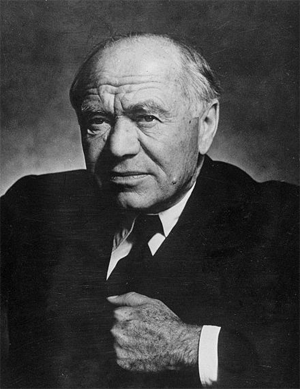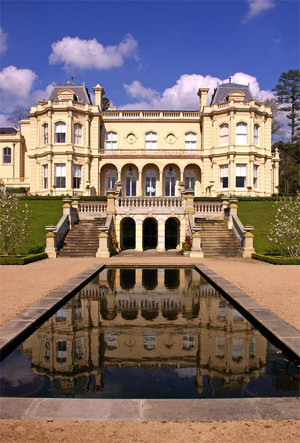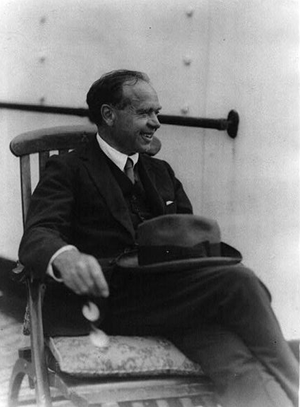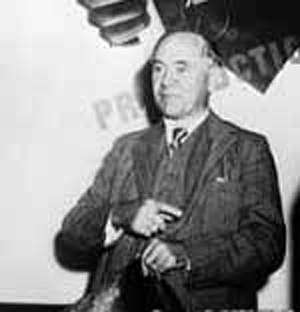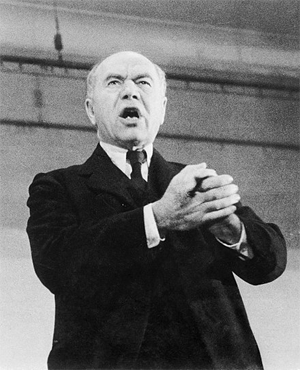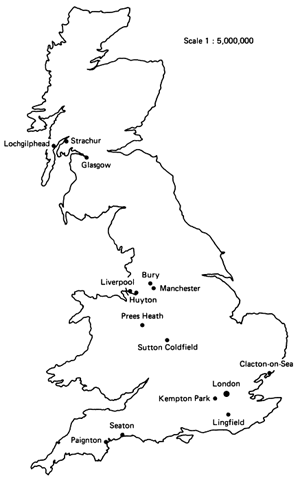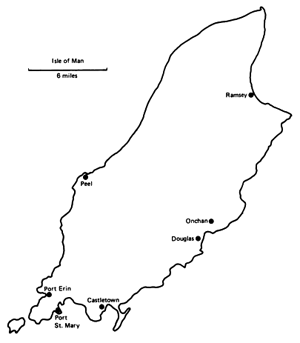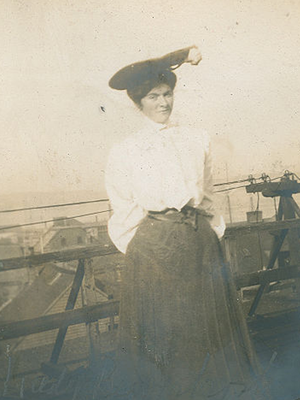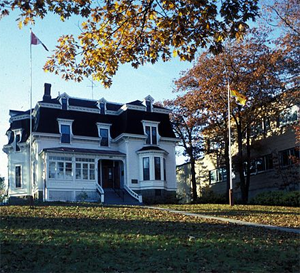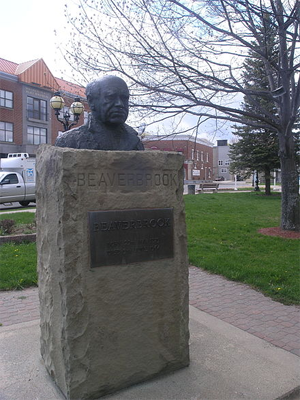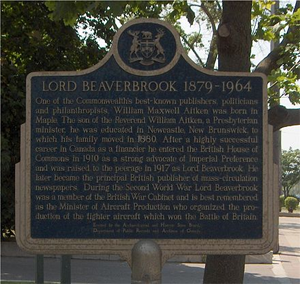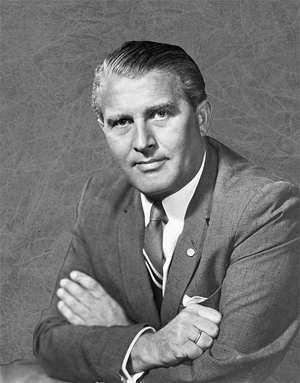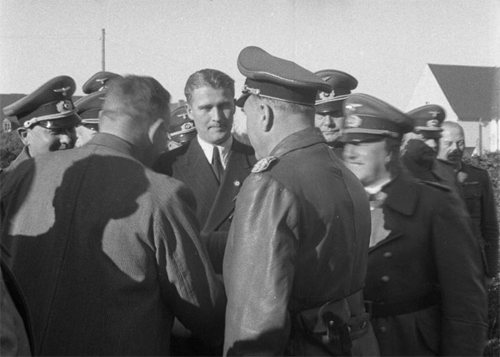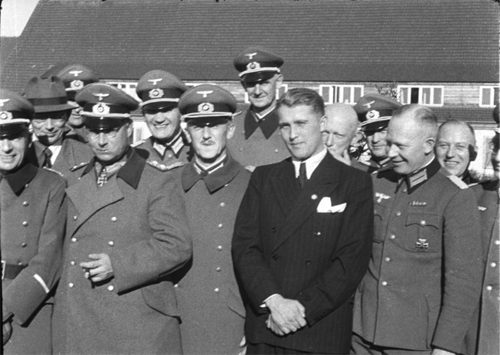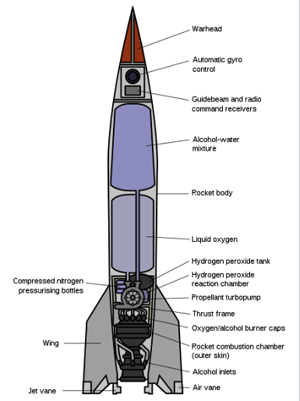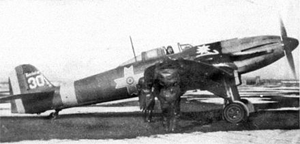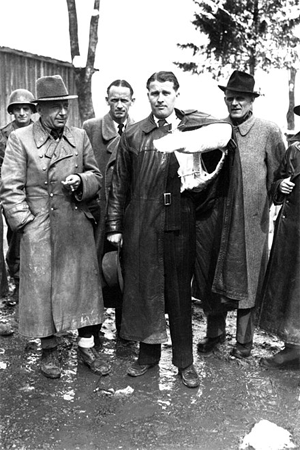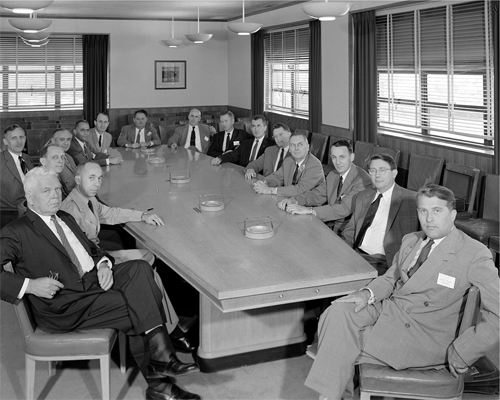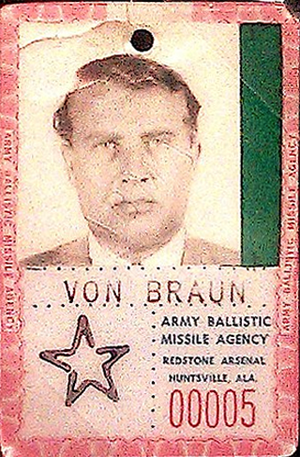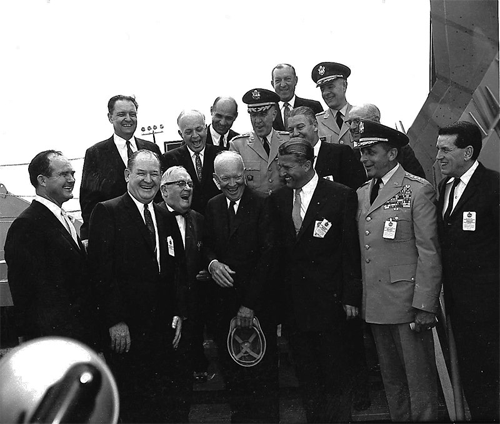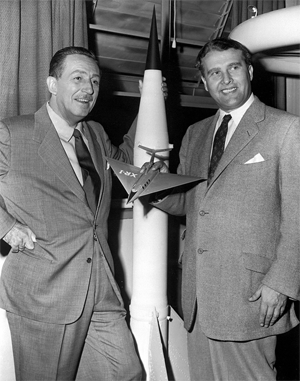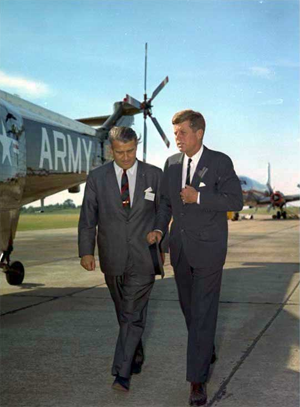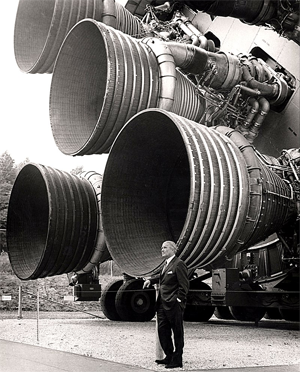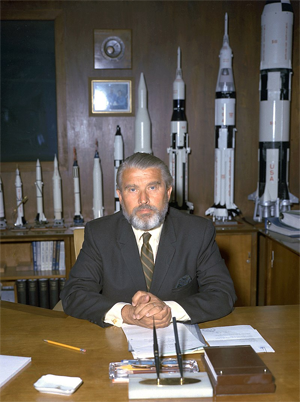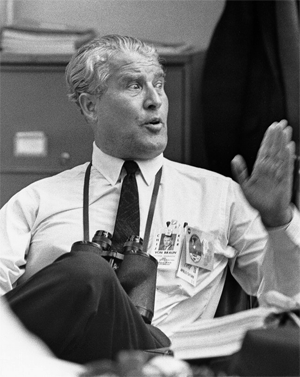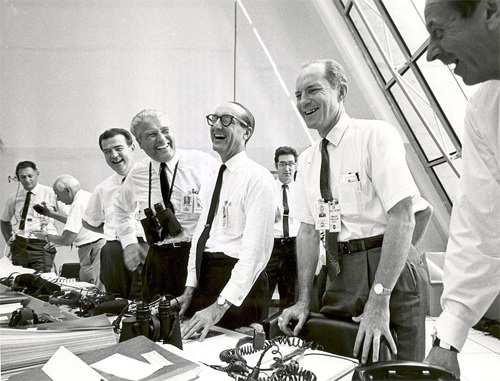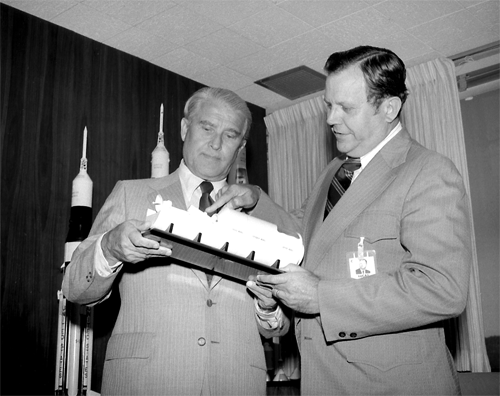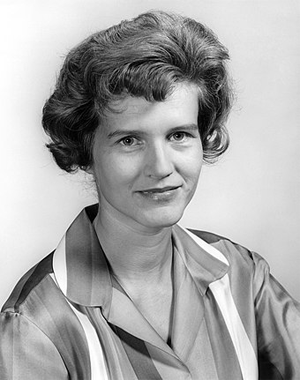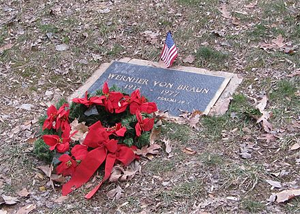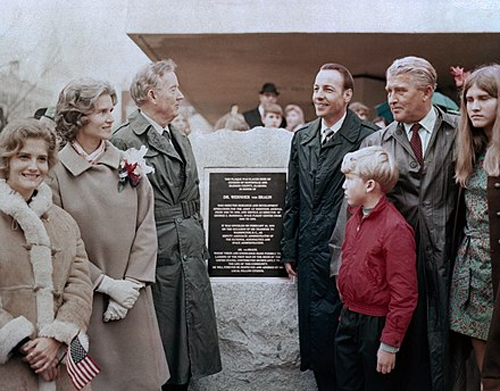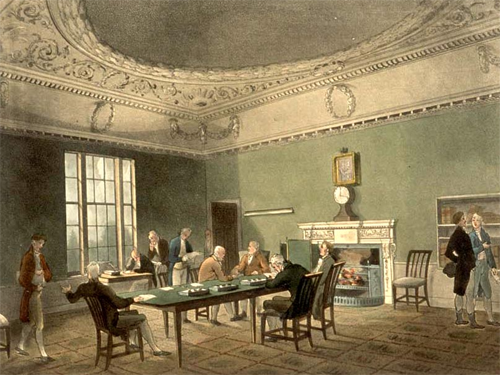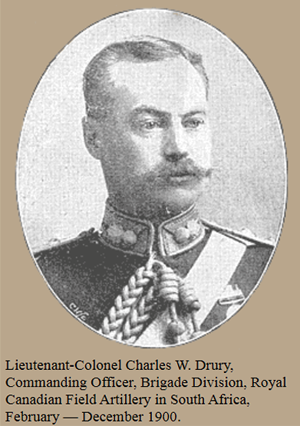Re: Freda Bedi, by Wikipedia
William Frederick Travers O'Connor
by Wikipedia
Accessed: 9/15/19
NOTICE: THIS WORK MAY BE PROTECTED BY COPYRIGHT
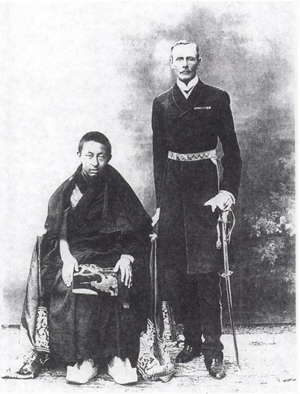
9th Panchen Lama and Sir William Frederick Travers O'Connor, taken in Calcutta. According to a paper by Braham Norwick in PIATS 2000, this photo was published in 1924 in Charles Bell's Tibet Past and Present(1924), p. 84
Sir William O'Connor, CIE CSI CVO
Birth name William Frederick Travers O'Connor
Born 30 July 1870
Longford, Ireland
Died 14 December 1943
Chelsea, London
Buried St Luke's Church Office, Headley Road, Grayshott, Hindhead, GU26 6LF
Allegiance United Kingdom
Service/branch Flag of the British Army.svg British Army Flag of Indian Army.svg Indian Army
Years of service 1890–1925
Rank Lieutenant Colonel
Unit Royal Artillery
Battles/wars Tirah Campaign, British expedition to Tibet, World War I
Awards Order of the Indian Empire, Royal Victorian Order,The Most Exalted Order of the Star of India, Knight Bachelor
Lieutenant Colonel Sir William Frederick Travers O'Connor CIE CSI CVO (30 July 1870 – 14 December 1943)[1][2][3][4] was an Irish diplomat and officer in the British and British Indian armies. He is remembered for his travels in Asia, cartography, study and publication of local cultures and language, his actions on the Younghusband expedition to Tibet, Royal Geographic Society council member,[5] member of the Royal Automobile Club[6] and for his work negotiating and signing the Nepal–Britain Treaty of 1923.
Early life
O'Connor was born in 1870, Longford, Ireland,[1] son of land agent[1] Matthew Weld O'Connor, and Harriet Georgina,[7] daughter of Anthony O’Reilly, of Baltrasna, County Meath. He had a sister, Lina O'Connor, and two younger brothers Matthew O'Connor and Myles O'Connor.[8] He was educated at Charterhouse School[1][9] as a Junior Scholar, in Verites house, 1884-1887.[10][8] Member of Charterhouse shooting team in 1885, and placing 7th,[10][8] winning the House Shooting Cup in 1885.[8]
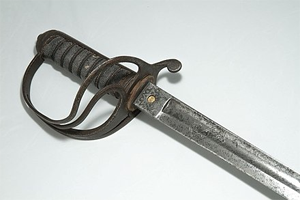
Wilkinson 1821 pattern sabre, serial number 29781 made in 1889, etched with W.F.T.O'C. initials.
He passed through the Royal Military Academy in 1888 and was gazetted to the Royal Artillery in 1890.[11] He received Henry Wilkinson sabre number 29781 in 1889, as gift from a family member.
Military career
14 February 1890 – Joined 14th Field Academy Royal Artillery at Shorncliffe as Second Lieutenant.[1][4]
14 February 1893 – Promoted to Lieutenant.[12]
1894 – Served in Indian mountain battery stationed near Darjeeling.[1][9]
1897–98 – Employed in the Swat valley and Tirah Campaigns, patrolling the Kurrum Valley.[13] Awarded medal and 3 clasps.[14]
1 October 1899 – Promoted to Captain.[15]
1899–1903 – Appointed inspecting officer of the Kashmir Imperial Service Troops, stationed at Gilgit near the border of Afghanistan and Chinese Turkmenistan.[1]
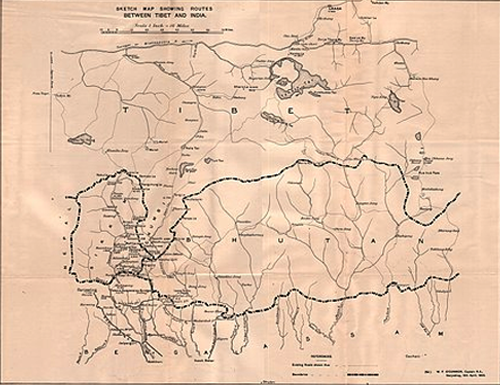
1903-04-13 Routes between Tibet and India by Captain W. F. O'Connor, Royal Artillery
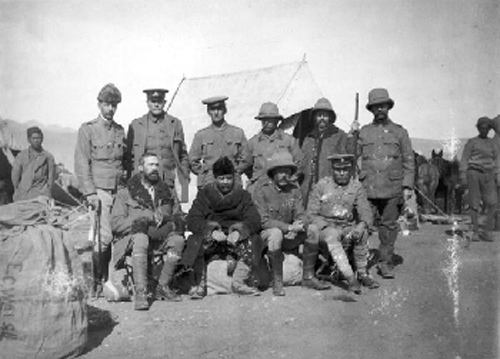
Younghusband team in 1904, O'Connor standing second from left
11 December 1903 – Departed Sikkim as interpreter, secretary and chief intelligence officer[16] to Sir Francis Younghusband's Lhasa mission as part of British expedition to Tibet.[1][9][17] Awarded medal and clasp.[18]
1904 – Employed former Sengchen Lama's personal attendant Sherab Gyatso to be his personal language teacher and suspected intelligence informant.[19]
21 May 1904 - Fought, and wounded, in battle to capture village of Pala.[20] David (born Dorje) MacDonald briefly took over O'Connor's interpreter duties during recovery.[9]
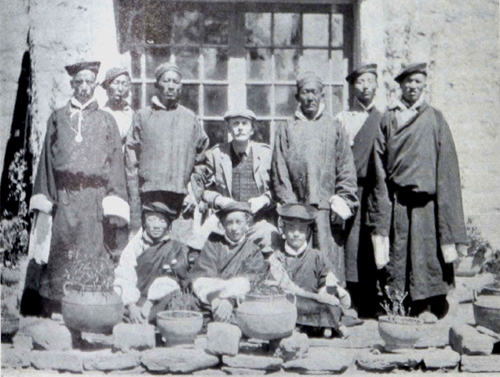
O'Connor and domestic staff at Gyantse in 1905
1905 – Posted as the first British Trade Agent at the new Trade Mart in Gyantse, under the Anglo-Tibet Convention.[1][8][9]
May 1905 – Investigated theft of remains of Younghusband mission money from boxes left at Gyantse.[9]
Summer 1906 – Stayed with Gertrude Bell whilst she worked on her travel book The Desert and the Sown[21].
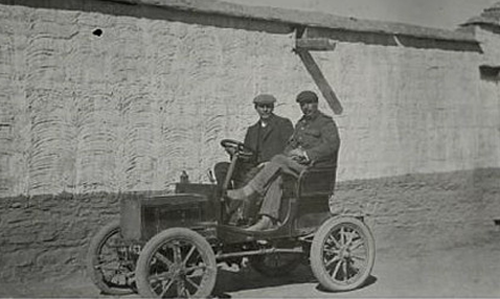
Frederick O'Connor (representative of English Trade in Tibet for British Raj, and secretary of Younghusband) and Thubten Chokyi Nyima, 9th Panchen Lama, in a Peugeot car, one of the two first in Tibet, in 1907
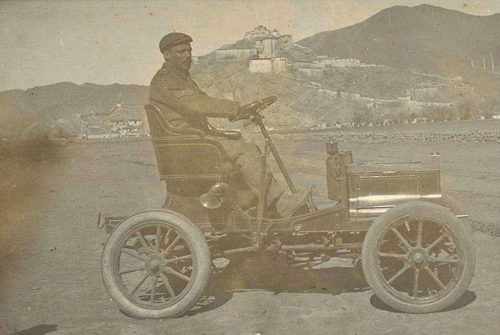
Peugeot in front of the Gyantse fortress in Freddie 1907
1907 – Import of two motor cars, by carrying over the Himalayas, into Tibet.[22] One was an 8hp Clement brought as a gift for Thubten Choekyi Nyima, the 9th Panchen Lama, who presided over Tashi Lhunpo monastery near Shigatse. The other was his own 6.5hp Baby Peugeot (Peugeot Type 69).[23]
1908 – Accompanied Sikkimese Prince on world tour and also to meet 13th Dali Lama.[9] O'Connor was the first Indian Government official to meet the Dalai Lama.[9]
14 February 1908 – Promoted to Major.[24]
30 September 1909 – Appointed His Majesty's council for the districts of Seistan and Kain.[25][1]
1910 – Serving in Mashad[9] as Consul-General and Agent to the Governor-General.[7]
1912 – Transferred to Shiraz, capital province of Fars,[1] as Consul.[7]
28 October 1913 – Met with the Edwin Montagu, Under-Secretary of State for India, at lunch arranged by Gertrude Bell, for 1.5 hour briefing and questions on the status of the frontier.[21]
November 1915 – Taken captive by Persian army[1][13]
14 February 1916 - Promoted to Lieutenant-Colonel.[26][4]
August 1916 – Released from Persian captivity as part of prisoner exchange.[1][13]
1918 – Met with Lord Beaverbrook, the Minister of Information and sent to Siberia to further the cause of the Allies and their friends amongst the Russians.[1][27]
9 April 1918 – Sailed from the Liverpool to New York on board the SS Carpathia,[28] taking 11 days,[27] to meet with senior military[13] and diplomats regarding the US policy in Siberia.
3 June 1918 – Arrived in to Vladivostok[27] and served as Resident.[7]
January 1921 – Appointed political officer at Gangtok.[9]
March 1921 – Left position in Gangtok and returned to England, when mother fell seriously ill.[9]
21 December 1921 – Signed Nepal–Britain Treaty of 1923 as British Envoy at the Court of Nepal.[29][7]
1925 – Retired from military service.[1]
Distinctions
• The Most Eminent Order of the Indian Empire, Companion (C.I.E.), 1904[30]
• Royal Victorian Order, Commander (C.V.O.), 1922[1]
• The Most Exalted Order of the Star of India, Companion (O.S.I.), 1924
• Knight Bachelor, 1925
Later life
2 February 1930 - Article in Detroit Free Press newspaper showing O'Connor leading tiger hunt in India.[31]
28 June 1931 – Article in The Indianapolis Sunday Star newspaper saying O'Connor inviting 5 Americans on tiger hunt for $100,000 ($20,000 each).[32]
30 June 1931 – Bankruptcy petition filed.[33]
29 July 1931 – Receiving Order issued on a creditor's petition.[33][6]
11:00 12 August 1931 – Date First Bankruptcy Meeting.[33]
30 October 1931 – Date of bankruptcy public examination.[33]
13 Jul 1932 – Arrived in Southampton from New York on the RMS Berengaria.
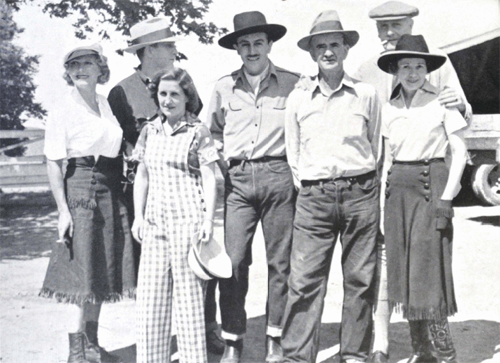
Group at Louis D. Lighton’s ranch, Southern California, 1938. Left to right: Heather Thatcher, Luis D. Lighton, Lillian Disney, Walt Disney, Ranch Foreman, William Frederic Travers O’Connor, Hope Loring.
16 July 1934 – Crossed border from Canada to Seattle, to go to L.A. and tour the US.[34]
27 November 1938 – The Old House performed by John McCormack at the Royal Albert Hall in London.[8]
November 1939 – The Old House recorded by John McCormack.[8]
14 December 1943 – Death, Chelsea.[1]
17 December 1943 – Funeral, St Luke's Church Office, Headley Road, Grayshott, Hindhead, GU26 6LF
Works
• Routes in Sikkim, 1900.[35]
• Report on Tibet, 1903.[36]
• Rules for the Phonetic Transcription into English of Tibetan Words, with Charles Alfred Bell,1904[37][38]
• Lhasa: an account of the country and people of Central Tibet, with Perceval Landon and Herbert James Walton, 1905.[39]
• Folk Tales from Tibet with Illustrations by a Tibetan Artist and Some Verses from Tibetan Love Songs, 1906.[40]
• On the frontier and beyond: a record of thirty years' service, 1931[27]
• Wrote music and lyrics to The Old House,[1][3] Quietide and One Hundred Years Ago, 1937.[1]
• Things mortal, 1940.[8]
References
1. "The Annual Register Volume 185". 1943.
2. Alex., McKay, (1997). Tibet and the British Raj: the frontier cadre, 1904–1947. Richmond, Surrey: Curzon. ISBN 0700706275. OCLC 37390564.
3. "LC Linked Data Service: Authorities and Vocabularies (Library of Congress)". id.loc.gov. The Library of Congress. Retrieved 8 May 2018.
4. "(550) – Army lists > 1913–1919 – Quarterly Army Lists (First Series) 1879–1922 > 1917 > Third quarter > Volume 3 – British Military lists – National Library of Scotland". digital.nls.uk. Retrieved 8 May 2018.
5. "Obituaries". The Geographical Journal. 103 to 104: 304. 1944.
6. "THE BANKRUPTCY ACTS, 1914 AND 1926" (PDF). Edinburgh Gazette. 4 August 1934. Retrieved 8 May2018.
7. F., Riddick, John (1998). Who was who in British India. Westport, Conn.: Greenwood Press. ISBN 0313292329. OCLC 39045191.
8. O'Connor, Frederick (1940). Things Mortal. London: Hodder and Stoutghton Limited.
9. Alex., McKay, (2009). Tibet and the British Raj : the frontier cadre, 1904-1947 (2nd ed.). Dharamsala, H.P.: Library of Tibetan Works and Archives. ISBN 9788186470923. OCLC 435961312.
10. Charterhouse register, 1872-1900. RareBooksClub.com. 2012. ISBN 1236288785.
11. "The London Gazette 25th February 1890".
12. "London Gazette 4th April 1893".
13. 1933–, Newton, David, (2009). Kipling's Canadian : Colonel Fraser Hunter, MPP, maverick soldier-surveyor in "the Great Game". Victoria, BC: Trafford. ISBN 9781425191412. OCLC 606116081.
14. Archives, The National. "The Discovery Service". discovery.nationalarchives.gov.uk. Retrieved 27 April 2018.
15. "The London Gazette 12th December 1905".
16. "Frederick O'Connor (biographical details)". cosmos.ucc.ie. Retrieved 27 April 2018.
17. 1940–, Allen, Charles, (2004). Duel in the snows : the true story of the Younghusband mission to Lhasa. London: John Murray. ISBN 0719554276. OCLC 53709120.
18. Archives, The National. "The Discovery Service". discovery.nationalarchives.gov.uk. Retrieved 27 April 2018.
19. Netherlands), International Association for Tibetan Studies. Seminar (9th : 2000 : Leiden, (2002). Tibetan studies : PIATS 2000 : Tibetan studies : proceedings of the Ninth Seminar of the International Association for Tibetan Studies, Leiden 2000. Blezer, Henk., Ardussi, John., Buffetrille, Katia., Diemberger, Hildegard., Huber, Toni. Leiden: Brill. ISBN 9004127755. OCLC 52449349.
20. 1869–1927., Landon, Perceval, (2000). Lhasa : an account of the country and people of Central Tibet and of the progress of the mission sent there by the English Government in the year 1903-4. Varanasi: Pilgrims. ISBN 8177690574. OCLC 647450672.
21. 1868–1926,, Bell, Gertrude Lowthian,. Gertrude Bell : complete letters. Volume I and II. Bell, Florence Eveleen Eleanore Olliffe, Lady, 1851–1930,. [United States]. ISBN 9781500826901. OCLC 967604643.
22. "Images of First Cars to Cross the Himalayas into Tibet 102 Years Ago and Secret Photos of Japan from 1898 for Sale".
23. "Bonhams : TIBET Album, likely to have belonged an army mechanic responsible for the first motor cars Tibet". http://www.bonhams.com. Retrieved 27 April 2018.
24. "London Gazette 10 April 1908".
25. "London Gazette 15 October 1909".
26. "The London Gazette 19 May 1916".
27. O'Connor, Frederick (1931). On the frontier and beyond: a record of thirty years' service. London: John Murray.
28. US Department of Labor Immigration Service, Form 500, 1918-04-09
29. "TREATY SERIES NO. 31 ( 1925). TREATY BETWEKS UNITED KINGDOM AND NEPAL TOGETHER WITH Note respecting the Importation of Arms and Ammunition into Nepal" (PDF).
30. "The London Gazette 16th December 1904".
31. "Tiger Hunting in India". Detroit Free Press. 2 February 1930.
32. "The Indianapolis Sunday Star". The Indianapolis Sunday Star. 28 June 1931.
33. "The London Gazette – 31st July 1931".
34. US Department of Labor Immigration Service, Form 54S, 1934-07-16
35. O'Connor, W. F. (1900). Routes in Sikkim. India: Office of the Superintendent of Government Printing.
36. "William Frederick Travers O'Connor - Wikisource, the free online library". en.wikisource.org. Retrieved 27 April 2018.
37. Martin, Emma (21 July 2016). "Translating Tibet in the Borderlands: Networks, Dictionaries, and Knowledge Production in Himalayan Hill Stations". Transcultural Studies. 0 (1): 86–120. ISSN 2191-6411.
38. William Jones (1962). Journal Of The Asiatic Society 1961 Vol Iii.
39. O'Connor, Frederick (1905). Lhasa: an account of the country and people of Central Tibet.
40. Connor, Capt. W. F (1906). Folk Tales from Tibet with Illustrations by a Tibetan Artist and Some Verses from Tibetan Love Songs. London: Hurst and Blackett LTD.
by Wikipedia
Accessed: 9/15/19
NOTICE: THIS WORK MAY BE PROTECTED BY COPYRIGHT
YOU ARE REQUIRED TO READ THE COPYRIGHT NOTICE AT THIS LINK BEFORE YOU READ THE FOLLOWING WORK, THAT IS AVAILABLE SOLELY FOR PRIVATE STUDY, SCHOLARSHIP OR RESEARCH PURSUANT TO 17 U.S.C. SECTION 107 AND 108. IN THE EVENT THAT THE LIBRARY DETERMINES THAT UNLAWFUL COPYING OF THIS WORK HAS OCCURRED, THE LIBRARY HAS THE RIGHT TO BLOCK THE I.P. ADDRESS AT WHICH THE UNLAWFUL COPYING APPEARED TO HAVE OCCURRED. THANK YOU FOR RESPECTING THE RIGHTS OF COPYRIGHT OWNERS.

9th Panchen Lama and Sir William Frederick Travers O'Connor, taken in Calcutta. According to a paper by Braham Norwick in PIATS 2000, this photo was published in 1924 in Charles Bell's Tibet Past and Present(1924), p. 84
Sir William O'Connor, CIE CSI CVO
Birth name William Frederick Travers O'Connor
Born 30 July 1870
Longford, Ireland
Died 14 December 1943
Chelsea, London
Buried St Luke's Church Office, Headley Road, Grayshott, Hindhead, GU26 6LF
Allegiance United Kingdom
Service/branch Flag of the British Army.svg British Army Flag of Indian Army.svg Indian Army
Years of service 1890–1925
Rank Lieutenant Colonel
Unit Royal Artillery
Battles/wars Tirah Campaign, British expedition to Tibet, World War I
Awards Order of the Indian Empire, Royal Victorian Order,The Most Exalted Order of the Star of India, Knight Bachelor
Lieutenant Colonel Sir William Frederick Travers O'Connor CIE CSI CVO (30 July 1870 – 14 December 1943)[1][2][3][4] was an Irish diplomat and officer in the British and British Indian armies. He is remembered for his travels in Asia, cartography, study and publication of local cultures and language, his actions on the Younghusband expedition to Tibet, Royal Geographic Society council member,[5] member of the Royal Automobile Club[6] and for his work negotiating and signing the Nepal–Britain Treaty of 1923.
Early life
O'Connor was born in 1870, Longford, Ireland,[1] son of land agent[1] Matthew Weld O'Connor, and Harriet Georgina,[7] daughter of Anthony O’Reilly, of Baltrasna, County Meath. He had a sister, Lina O'Connor, and two younger brothers Matthew O'Connor and Myles O'Connor.[8] He was educated at Charterhouse School[1][9] as a Junior Scholar, in Verites house, 1884-1887.[10][8] Member of Charterhouse shooting team in 1885, and placing 7th,[10][8] winning the House Shooting Cup in 1885.[8]

Wilkinson 1821 pattern sabre, serial number 29781 made in 1889, etched with W.F.T.O'C. initials.
He passed through the Royal Military Academy in 1888 and was gazetted to the Royal Artillery in 1890.[11] He received Henry Wilkinson sabre number 29781 in 1889, as gift from a family member.
Military career
14 February 1890 – Joined 14th Field Academy Royal Artillery at Shorncliffe as Second Lieutenant.[1][4]
14 February 1893 – Promoted to Lieutenant.[12]
1894 – Served in Indian mountain battery stationed near Darjeeling.[1][9]
1897–98 – Employed in the Swat valley and Tirah Campaigns, patrolling the Kurrum Valley.[13] Awarded medal and 3 clasps.[14]
1 October 1899 – Promoted to Captain.[15]
1899–1903 – Appointed inspecting officer of the Kashmir Imperial Service Troops, stationed at Gilgit near the border of Afghanistan and Chinese Turkmenistan.[1]

1903-04-13 Routes between Tibet and India by Captain W. F. O'Connor, Royal Artillery

Younghusband team in 1904, O'Connor standing second from left
11 December 1903 – Departed Sikkim as interpreter, secretary and chief intelligence officer[16] to Sir Francis Younghusband's Lhasa mission as part of British expedition to Tibet.[1][9][17] Awarded medal and clasp.[18]
1904 – Employed former Sengchen Lama's personal attendant Sherab Gyatso to be his personal language teacher and suspected intelligence informant.[19]
21 May 1904 - Fought, and wounded, in battle to capture village of Pala.[20] David (born Dorje) MacDonald briefly took over O'Connor's interpreter duties during recovery.[9]

O'Connor and domestic staff at Gyantse in 1905
1905 – Posted as the first British Trade Agent at the new Trade Mart in Gyantse, under the Anglo-Tibet Convention.[1][8][9]
May 1905 – Investigated theft of remains of Younghusband mission money from boxes left at Gyantse.[9]
Summer 1906 – Stayed with Gertrude Bell whilst she worked on her travel book The Desert and the Sown[21].

Frederick O'Connor (representative of English Trade in Tibet for British Raj, and secretary of Younghusband) and Thubten Chokyi Nyima, 9th Panchen Lama, in a Peugeot car, one of the two first in Tibet, in 1907

Peugeot in front of the Gyantse fortress in Freddie 1907
1907 – Import of two motor cars, by carrying over the Himalayas, into Tibet.[22] One was an 8hp Clement brought as a gift for Thubten Choekyi Nyima, the 9th Panchen Lama, who presided over Tashi Lhunpo monastery near Shigatse. The other was his own 6.5hp Baby Peugeot (Peugeot Type 69).[23]
1908 – Accompanied Sikkimese Prince on world tour and also to meet 13th Dali Lama.[9] O'Connor was the first Indian Government official to meet the Dalai Lama.[9]
14 February 1908 – Promoted to Major.[24]
30 September 1909 – Appointed His Majesty's council for the districts of Seistan and Kain.[25][1]
1910 – Serving in Mashad[9] as Consul-General and Agent to the Governor-General.[7]
1912 – Transferred to Shiraz, capital province of Fars,[1] as Consul.[7]
28 October 1913 – Met with the Edwin Montagu, Under-Secretary of State for India, at lunch arranged by Gertrude Bell, for 1.5 hour briefing and questions on the status of the frontier.[21]
November 1915 – Taken captive by Persian army[1][13]
14 February 1916 - Promoted to Lieutenant-Colonel.[26][4]
August 1916 – Released from Persian captivity as part of prisoner exchange.[1][13]
1918 – Met with Lord Beaverbrook, the Minister of Information and sent to Siberia to further the cause of the Allies and their friends amongst the Russians.[1][27]
9 April 1918 – Sailed from the Liverpool to New York on board the SS Carpathia,[28] taking 11 days,[27] to meet with senior military[13] and diplomats regarding the US policy in Siberia.
3 June 1918 – Arrived in to Vladivostok[27] and served as Resident.[7]
January 1921 – Appointed political officer at Gangtok.[9]
March 1921 – Left position in Gangtok and returned to England, when mother fell seriously ill.[9]
21 December 1921 – Signed Nepal–Britain Treaty of 1923 as British Envoy at the Court of Nepal.[29][7]
1925 – Retired from military service.[1]
Distinctions
• The Most Eminent Order of the Indian Empire, Companion (C.I.E.), 1904[30]
• Royal Victorian Order, Commander (C.V.O.), 1922[1]
• The Most Exalted Order of the Star of India, Companion (O.S.I.), 1924
• Knight Bachelor, 1925
Later life
2 February 1930 - Article in Detroit Free Press newspaper showing O'Connor leading tiger hunt in India.[31]
28 June 1931 – Article in The Indianapolis Sunday Star newspaper saying O'Connor inviting 5 Americans on tiger hunt for $100,000 ($20,000 each).[32]
30 June 1931 – Bankruptcy petition filed.[33]
29 July 1931 – Receiving Order issued on a creditor's petition.[33][6]
11:00 12 August 1931 – Date First Bankruptcy Meeting.[33]
30 October 1931 – Date of bankruptcy public examination.[33]
13 Jul 1932 – Arrived in Southampton from New York on the RMS Berengaria.

Group at Louis D. Lighton’s ranch, Southern California, 1938. Left to right: Heather Thatcher, Luis D. Lighton, Lillian Disney, Walt Disney, Ranch Foreman, William Frederic Travers O’Connor, Hope Loring.
Upon the surprise attack on Pearl Harbor by the Axis-affiliated Empire of Japan on December 7, 1941, 500 United States Army troops moved in the next day to occupy Walt Disney Studios in Burbank, California for the next eight months—the only Hollywood film studio under military occupation in history—as America began a massive build up to fight in World War II. The soldiers were stationed there to protect a nearby Lockheed aircraft plant from enemy air raids, convert parking garages into ammunition depots, and fixing equipment in large soundstages.[1] From there, Disney was approached with requests from the U.S. services to produce propaganda films.[2] The Navy was the first, and other branches of the government, including the Army Air Forces, the Department of Agriculture, and the Treasury Department, rapidly caught on to Disney’s creative approach to generating educational films, propaganda, and insignias.
During World War II, Disney made films for every branch of the United States Armed Forces and government.[3][4] This was accomplished through the use of animated graphics by means of expediting the intelligent mobilization of servicemen and civilians for the cause of the war. Over 90% of Disney employees were devoted to the production of training and propaganda films for the government.[3] Throughout the duration of the war, Disney produced over 400,000 feet of educational war films, most at cost, which is equal to 68 hours of continuous films. In 1943 alone, 204,000 feet of film was produced. [2]
As well as producing films for different government divisions from 1942 to 1943, Disney was asked to create animation for a series of pictures produced by Colonel Frank Capra for the U.S. Army.[2] This series included films such as Prelude to War and America goes to War. Although these films were originally intended for servicemen, they were released to theaters because of their popularity.
-- Walt Disney's World War II propaganda production, by Wikipedia
16 July 1934 – Crossed border from Canada to Seattle, to go to L.A. and tour the US.[34]
27 November 1938 – The Old House performed by John McCormack at the Royal Albert Hall in London.[8]
November 1939 – The Old House recorded by John McCormack.[8]
14 December 1943 – Death, Chelsea.[1]
17 December 1943 – Funeral, St Luke's Church Office, Headley Road, Grayshott, Hindhead, GU26 6LF
Works
• Routes in Sikkim, 1900.[35]
• Report on Tibet, 1903.[36]
• Rules for the Phonetic Transcription into English of Tibetan Words, with Charles Alfred Bell,1904[37][38]
• Lhasa: an account of the country and people of Central Tibet, with Perceval Landon and Herbert James Walton, 1905.[39]
• Folk Tales from Tibet with Illustrations by a Tibetan Artist and Some Verses from Tibetan Love Songs, 1906.[40]
• On the frontier and beyond: a record of thirty years' service, 1931[27]
• Wrote music and lyrics to The Old House,[1][3] Quietide and One Hundred Years Ago, 1937.[1]
• Things mortal, 1940.[8]
References
1. "The Annual Register Volume 185". 1943.
2. Alex., McKay, (1997). Tibet and the British Raj: the frontier cadre, 1904–1947. Richmond, Surrey: Curzon. ISBN 0700706275. OCLC 37390564.
3. "LC Linked Data Service: Authorities and Vocabularies (Library of Congress)". id.loc.gov. The Library of Congress. Retrieved 8 May 2018.
4. "(550) – Army lists > 1913–1919 – Quarterly Army Lists (First Series) 1879–1922 > 1917 > Third quarter > Volume 3 – British Military lists – National Library of Scotland". digital.nls.uk. Retrieved 8 May 2018.
5. "Obituaries". The Geographical Journal. 103 to 104: 304. 1944.
6. "THE BANKRUPTCY ACTS, 1914 AND 1926" (PDF). Edinburgh Gazette. 4 August 1934. Retrieved 8 May2018.
7. F., Riddick, John (1998). Who was who in British India. Westport, Conn.: Greenwood Press. ISBN 0313292329. OCLC 39045191.
8. O'Connor, Frederick (1940). Things Mortal. London: Hodder and Stoutghton Limited.
9. Alex., McKay, (2009). Tibet and the British Raj : the frontier cadre, 1904-1947 (2nd ed.). Dharamsala, H.P.: Library of Tibetan Works and Archives. ISBN 9788186470923. OCLC 435961312.
10. Charterhouse register, 1872-1900. RareBooksClub.com. 2012. ISBN 1236288785.
11. "The London Gazette 25th February 1890".
12. "London Gazette 4th April 1893".
13. 1933–, Newton, David, (2009). Kipling's Canadian : Colonel Fraser Hunter, MPP, maverick soldier-surveyor in "the Great Game". Victoria, BC: Trafford. ISBN 9781425191412. OCLC 606116081.
14. Archives, The National. "The Discovery Service". discovery.nationalarchives.gov.uk. Retrieved 27 April 2018.
15. "The London Gazette 12th December 1905".
16. "Frederick O'Connor (biographical details)". cosmos.ucc.ie. Retrieved 27 April 2018.
17. 1940–, Allen, Charles, (2004). Duel in the snows : the true story of the Younghusband mission to Lhasa. London: John Murray. ISBN 0719554276. OCLC 53709120.
18. Archives, The National. "The Discovery Service". discovery.nationalarchives.gov.uk. Retrieved 27 April 2018.
19. Netherlands), International Association for Tibetan Studies. Seminar (9th : 2000 : Leiden, (2002). Tibetan studies : PIATS 2000 : Tibetan studies : proceedings of the Ninth Seminar of the International Association for Tibetan Studies, Leiden 2000. Blezer, Henk., Ardussi, John., Buffetrille, Katia., Diemberger, Hildegard., Huber, Toni. Leiden: Brill. ISBN 9004127755. OCLC 52449349.
20. 1869–1927., Landon, Perceval, (2000). Lhasa : an account of the country and people of Central Tibet and of the progress of the mission sent there by the English Government in the year 1903-4. Varanasi: Pilgrims. ISBN 8177690574. OCLC 647450672.
21. 1868–1926,, Bell, Gertrude Lowthian,. Gertrude Bell : complete letters. Volume I and II. Bell, Florence Eveleen Eleanore Olliffe, Lady, 1851–1930,. [United States]. ISBN 9781500826901. OCLC 967604643.
22. "Images of First Cars to Cross the Himalayas into Tibet 102 Years Ago and Secret Photos of Japan from 1898 for Sale".
23. "Bonhams : TIBET Album, likely to have belonged an army mechanic responsible for the first motor cars Tibet". http://www.bonhams.com. Retrieved 27 April 2018.
24. "London Gazette 10 April 1908".
25. "London Gazette 15 October 1909".
26. "The London Gazette 19 May 1916".
27. O'Connor, Frederick (1931). On the frontier and beyond: a record of thirty years' service. London: John Murray.
28. US Department of Labor Immigration Service, Form 500, 1918-04-09
29. "TREATY SERIES NO. 31 ( 1925). TREATY BETWEKS UNITED KINGDOM AND NEPAL TOGETHER WITH Note respecting the Importation of Arms and Ammunition into Nepal" (PDF).
30. "The London Gazette 16th December 1904".
31. "Tiger Hunting in India". Detroit Free Press. 2 February 1930.
32. "The Indianapolis Sunday Star". The Indianapolis Sunday Star. 28 June 1931.
33. "The London Gazette – 31st July 1931".
34. US Department of Labor Immigration Service, Form 54S, 1934-07-16
35. O'Connor, W. F. (1900). Routes in Sikkim. India: Office of the Superintendent of Government Printing.
36. "William Frederick Travers O'Connor - Wikisource, the free online library". en.wikisource.org. Retrieved 27 April 2018.
37. Martin, Emma (21 July 2016). "Translating Tibet in the Borderlands: Networks, Dictionaries, and Knowledge Production in Himalayan Hill Stations". Transcultural Studies. 0 (1): 86–120. ISSN 2191-6411.
38. William Jones (1962). Journal Of The Asiatic Society 1961 Vol Iii.
39. O'Connor, Frederick (1905). Lhasa: an account of the country and people of Central Tibet.
40. Connor, Capt. W. F (1906). Folk Tales from Tibet with Illustrations by a Tibetan Artist and Some Verses from Tibetan Love Songs. London: Hurst and Blackett LTD.
